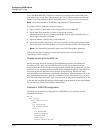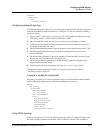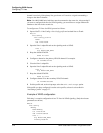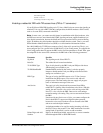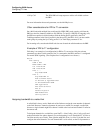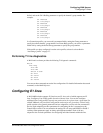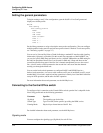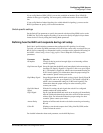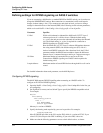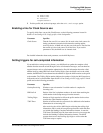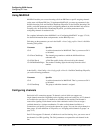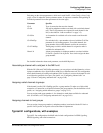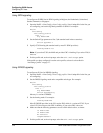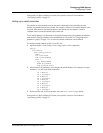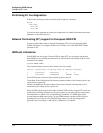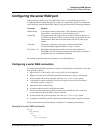
3-22 MAX 6000/3000 Network Configuration Guide
Configuring WAN Access
Configuring E1 lines
Defining settings for DPNSS signaling on DASS 2 switches
If you are connecting a MAX unit to a standard DPNSS or DASS2 switch, you do not have to
change the DPNSS/DASS2 settings. But connection to a nonstandard switch could require
changes in these settings. Also, if you connect two units back-to-back, you have to change
settings for the unit that acts as the network (PBX) side. Following are the relevant parameters,
which are in each Net/E1 > Line Config > Line Config profile > Line N profile
:
For detailed information about each parameter, see the MAX Reference.
Configuring DPNSS signaling
The MAX 3000 supports DPNSS signalling when connecting to a DASS2 switch. To
configure an E1 line for DPNSS signaling:
1 Open the Net/E1 > Line Config > Line Config profile > Line N subprofile for the line you
are configuring.
2 Set Sig Mode to DPNSS, and set Switch Type to specify the DPNSS-compatible switch.
For example:
Net/E1
Line Config
Line Config profile
Line 1...
Sig Mode=DPNSS
Switch Type=DASS2
Mercury is a variant of DPNSS.
3 Specify the framing mode required by your service provider. For example:
Framing Mode=2DS
Most E1 DPNSS providers in the U.K. require 2DS, which is a variant of G.703. If you
select G.703, the unit provides CRC-4 checking. If you select 2DS, it does not.
4 Make sure that the following parameters are set to their default values, as shown:
Parameter Specifies
L3 End Which call (outbound or inbound) the MAX unit’s CCITT Layer 3
software processes if a collision occurs. With the default setting
(x-side), the unit processes the outbound call and drops the inbound
call. The default setting (x-side) is required for connection to
DPNSS signaling on a DASS2 switch.
L2 End How the MAX unit’s CCITT Layer 2 software differentiates between
the acting network (PBX) side and the acting user (ET) side of a
back-to-back DPNSS connection. On a functional level, the L2 End
parameter enables the DPNSS state machine to detect the difference
between Layer 2 command messages and Layer 2 response messages.
NL Value Maximum number of retransmissions to send on an E1 line.
Connection to DPNSS signaling on a DASS2 switch requires the
default setting of 64.
LoopAvoidance Maximum number of transit PBX devices through which a call can be
routed.



